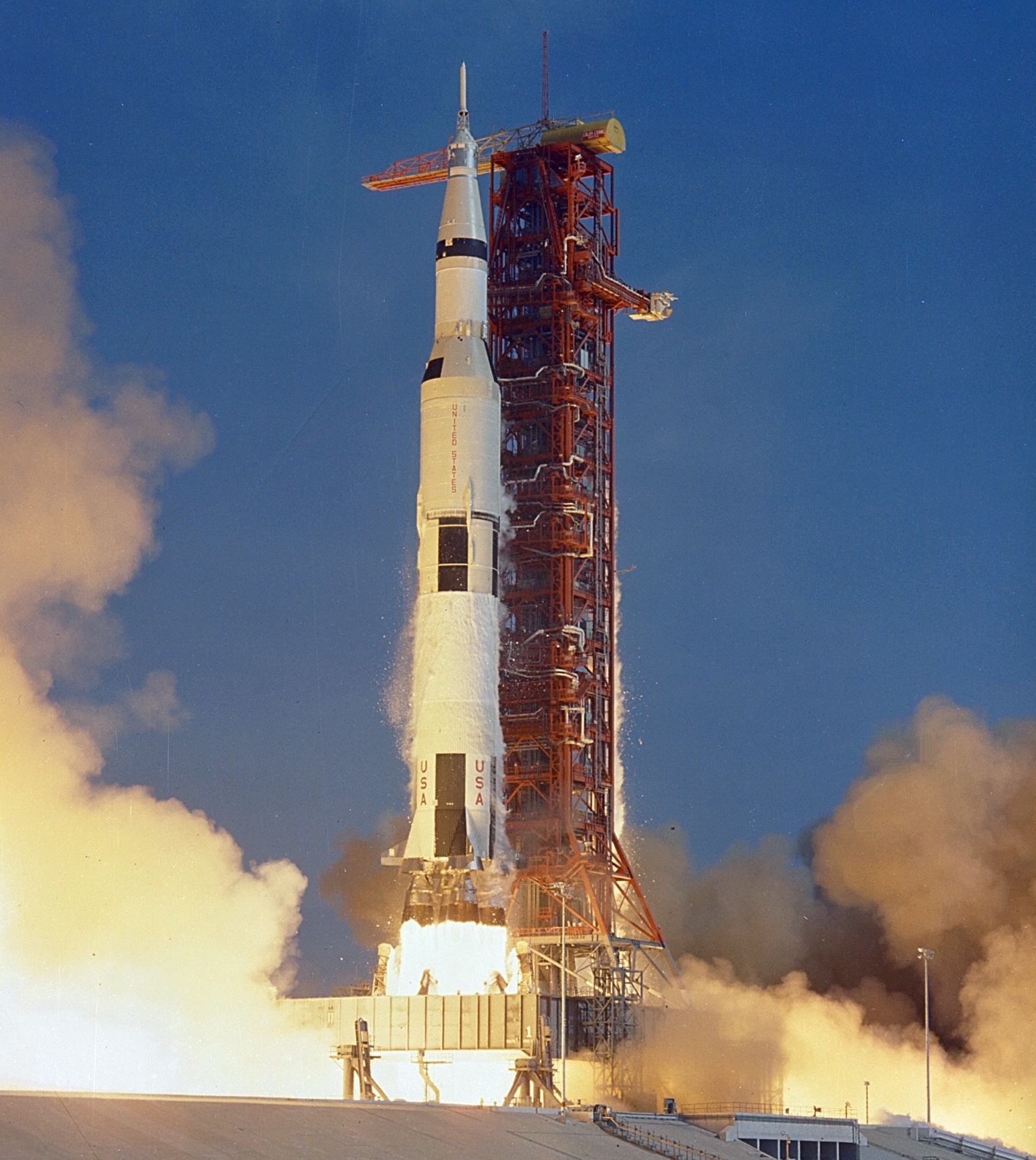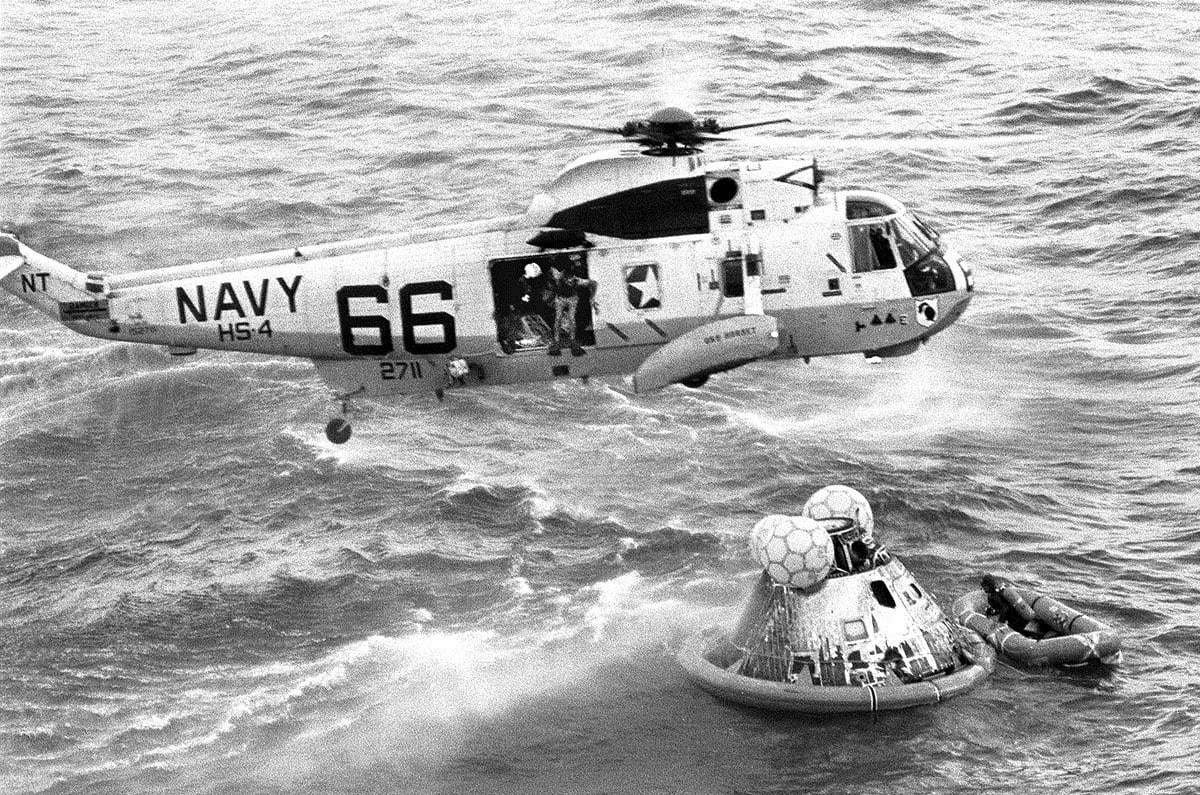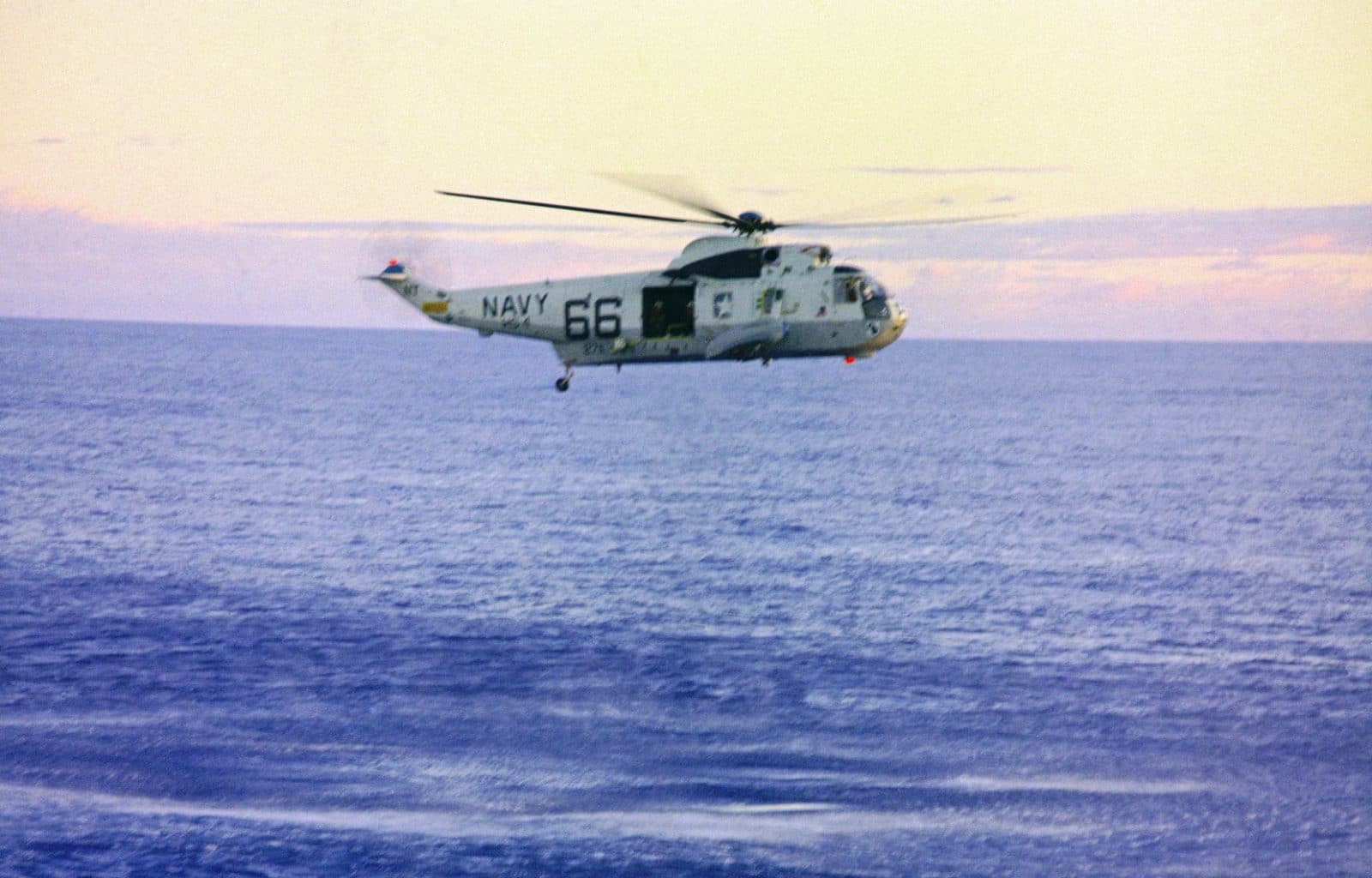Old Navy Helicopters Don’t Usually Become Famous, But Old 66 Did
At 0550 local time on 24 July 1969, Apollo 11 splashed down in the Pacific Ocean south of Johnston Atoll and 920 miles southwest of Honolulu in Hawaii. Assigned as the primary recovery ship for Apollo 11, the Essex-class aircraft carrier USS Hornet (CVS-12) had recently returned from her final WestPac deployment with Carrier Anti-Submarine Air Group FIVE SEVEN (CVSG-57) embarked. During that deployment, CVSG-57 consisted of Air Anti-Submarine Squadron THREE FIVE (VS-35) Boomerangers and VS-37 Sawbucks flying the Grumman S-2E Tracker, Airborne Early Warning Squadron ONE ONE ONE (VAW-111) Grey Berets Detachment 12 flying the Grumman E-1B Tracer, and Helicopter Anti-submarine Warfare Squadron TWO (HS-2) Golden Falcons flying the Sikorsky SH-3A Sea King helicopter.

The Recovery Business
When Hornet put into Pearl, she traded some of the squadrons from CVSG-57 for a more specialized group. Aboard the Hornet for the Apollo 11 recovery from CVSG-59 were HS-4 Black Knights flying the SH-3D variant of the Sea King, along with a detachment from VAW-111 Grey Berets still flying their Grumman E-1B Tracers, and a detachment from Fleet Logistics Support Squadron THREE ZERO (VR-30) Providers flying the Grumman C-1A Trader. Also embarked were Underwater Demolition Teams Eleven (UDT-11) and Twelve (UDT-12). Aboard the Hornet when she pulled out of Pearl and headed southwest toward the recovery area was one particular SH-3D Sea King helicopter- one that would become perhaps the most famous Sea King ever.

Those Oft-Quoted First Words on the Moon
Apollo 11 had blasted off from Kennedy Space Center in Florida eight days earlier. The famous transmissions from the moon had thrilled the world; the landing on the moon in the lunar module and the iconic “Houston, Tranquility Base here – the Eagle has landed” call crackling over the airwaves. Then the first steps on the dusty surface and Neil Armstrong’s famous line: “That’s one small step for a man, one giant leap for mankind.” It was an awesome time to be alive and recognize the accomplishments of Armstrong, Aldrin, and Collins that summer. But if they couldn’t be expediently fished out of the Pacific then the story would certainly not have ended anywhere near as well as it did!

Practically a Bullseye Splashdown
They got a good start by splashing down only 13 miles from the Hornet. Nearly 20 practice recoveries were made during the days leading up to the splashdown of Columbia, as the command module was named. Weather concerns forced the Hornet to relocate 250 miles eastward. President Richard M. Nixon, Admiral John S. McCain (CINCPAC), and several other VIPs arrived and were aboard the Hornet that day. But a helicopter would upstage them all. Sikorsky SH-3D Sea King, Bureau Number (BuNo) 152711 and side number 66 (Old 66), assigned to HS-4 Black Knights, would become the most famous and photographed SH-3D ever.

Lots of Rotorcraft on Call
There were actually four HS-4 helos in the air that morning. One SH-3D was stationed a few miles astern of the carrier; another would remain on station the same distance ahead of the ship. The primary recovery helo and a photography helo circled the ship at a distance of about a mile. Word was passed that the Hornet had detected the descending Columbia on radar. The primary and photo helos set out toward the splashdown area. When they arrived just before dawn, Columbia was floating upside down in calm seas. The astronauts inflated the three large flotation balloons, which righted the command module. Then the recovery began in earnest.

